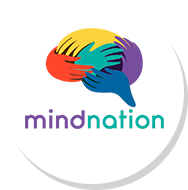One billion people, or 15% of the world’s population, experience some form of disability, according to the World Health Organization. Despite this large number, there are still many able-bodied people who do not know how to properly act towards persons with disabilities (PWDs). They stare, use the wrong words to refer to the disabled person, or even make insensitive jokes. “Most of the time, these are not done intentionally,” says Ed Geronia, a writer, technology entrepreneur, and who has a mobility impairment due to polio. “People just don’t know any better because there is still a lack of awareness about the situation of PWDs, they only know about disabilities from what they see in the media.”
““When in doubt, it’s always okay to ask a PWD ‘What should I call you?’ or ‘What’s the proper way to refer to you?’”
Ed Geronia, Writer, Technology Entrepreneur
It’s important that able-bodied people learn how to interact with PWDs properly so that they will not inadvertently hurt or offend them. Treating someone differently based on their appearance or a certain characteristic is a form of discrimination, and targets of discrimination often suffer effects ranging from low self-esteem to a higher risk of developing stress-related disorders such as anxiety and depression. “At my age, I can brush off jokes and not be as easily offended, but it can be harder for younger PWDs,” points out Ed. “They internalize these hurtful words and actions and those make it harder for them to adapt to society.”
If a loved one with a disability is struggling with mental health challenges because of the way they are treated by others, our psychologists are available 24/7 for teletherapy sessions. Book a session now through https://bit.ly/mn-chat.
Ed shares some tips below for properly interacting with people with disabilities.
- Never assume what a PWD can or cannot do. “Don’t think that someone who cannot go up or down a flight of stairs,” says Ed. “I can be just as adept as an able-bodied person as long as I have my cane and there are handrails. Similarly, don’t assume that all deaf people cannot communicate properly; they can, it’s just their mode of communication is different from ours.”
So if a loved one or colleague is a PWD, learn as much as you can about their disability by joining online resource groups or communities. “When you understand their situation more, you will realize that many of your assumptions are unfounded,” he adds. - Be patient. It takes persons with disabilities a longer time to complete tasks compared to able-bodied people. “The world in general is not very PWD-friendly,” Ed shares. For example, not all countries have audible signal lights to aid the sight-impaired, or wide sidewalks for those who need to use wheelchairs. So if, for example, you are accompanying a person with a mobility impairment up a flight of stairs, or standing in line at the automated teller machine behind a person with a sight impairment, don’t rush them. Instead, ask what you can do to assist.
- Always ask before you help. On more than one occasion, Ed has experienced helpful strangers snatching his cane away from him in their eagerness to assist when they encounter him going up or down the stairs. “I know they’re just trying to help, but when they take my cane away out of the blue, it throws me off-balance and I either trip or fall,” he shares. “I usually have to tell them ‘It’s okay, I can manage.’”
Another example — when you see someone in a wheelchair going up a ramp and they are steadily ascending, just let them be; don’t suddenly grab the handlebars and start pushing, you will just jolt the person and impact their balance.
So before you help someone, ask first if they would require assistance, and don’t be offended if your offer is declined.“Many of us are just doing things at our own pace and even though it may seem to you that we are struggling, we are fine and would rather complete the task on our own,” Ed adds.

- Avoid inappropriate language. Commonly accepted terminology includes “people/persons with disabilities” and “a person with a visual/hearing/physical/speech/cognitive impairment.” On the other hand, offensive terms include: wheelchair-bound (use wheelchair-user), victim of, suffers from, retarded, deformed, or crippled. “When in doubt, it’s always okay to ask a PWD ‘What should I call you?’ or ‘What’s the proper way to refer to you?’” Ed assures.
For this same reason, do not describe a person as disabled or handicapped unless it is clearly pertinent to the conversation. Do not say “Do you remember my friend Robert, the deaf lawyer?” Instead, just say “Do you remember my friend Robert, the lawyer?”
- Educate yourself. By learning about the different forms of disabilities, you also learn how you can bring about the necessary changes needed to improve how you interact with them. For those who want to get started, Ed recommends the following books and movies:
- The Theory of Everything (film). Tells the struggle that world-renowned genius Stephen Hawking went through while dealing with his motor-neurone disease.
- Crip Camp (film). A critically-acclaimed documentary film about a camp designed for teens with disabilities and how these campers became disability rights activists.
- Sound of Metal (film). About a heavy metal drummer who loses his hearing.
- Haben: The Deafblind Woman Who Conquered Harvard Law (book). A memoir by Haben Girma, a disability rights advocate and the first deaf-blind graduate of Harvard Law School.
- Criptionary (book). A humorous collection that brings attention to the everyday struggles and obstacles faced by persons with disabilities
- I See Things Differently: A First Look At Autism (book). Written for kids, it will help them understand what autism is and how it affects someone who has it.
Persons with disabilities are human too. By acknowledging their differences as you would acknowledge anyone else’s uniqueness, you show them the respect and empathy that they deserve and avoid unconsciously offending or hurting them.



















